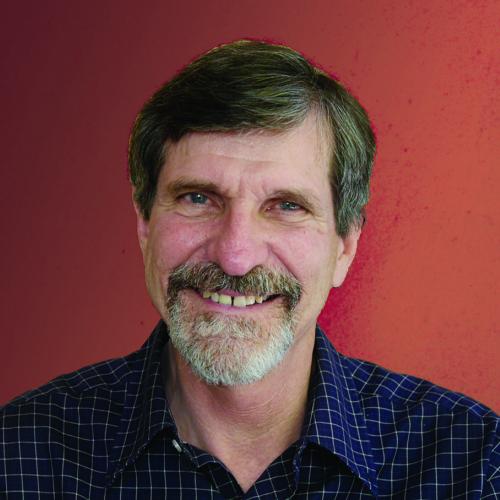
Loneliness, urban design, and form-based codes
Humans are social, yet this primary fact of life is oddly absent as a core consideration in modern urban development regulations. To ignore the social needs of our species is to lose sight of one of the most positive drivers for shaping sustainable urban form. Providing for the satisfactions of community counters sprawl. Yet conventional land-use zoning disperses people and strips social life from the landscape. This is where form-based codes come in. They are the tool par excellence for guiding development in a socially sensitive way, configuring buildings and streets to enliven social life.
A remarkable and growing body of literature in contemporary social research is telling us that healthy, well functioning communities need face-to-face meeting, interaction, and communication among their members, something that electronic “social media” cannot replace. And it requires high quality physical space.
This has been known from ancient times by city builders and philosophers who recognized humans’ basic social nature, but didn’t have the science to back the assumption up. We are now living in an era in which this subject is now under the lens of the scientific community. But let’s start with Aristotle, then consider insights from contemporary research, and finally see how form-based codes fit into it all.
Being together is in our blood
Aristotle observed that all animals are most alive when living at the top of their form—“thriving” is the word that Kaiser Permanente currently uses. “It is the excellent employment of his powers that constitute his happiness, as the reverse of this constitutes his misery,” according to Aristotle.[1] For him the great value of cities is not that they are economic engines; rather they are valuable because they allow us to live fully alive to our nature—in itself good for the bottom line. At the core of human nature is sociality. A human “is a social being, and by nature adapted to share his life with others ... Now if he is solitary, life is hard for him; for it is difficult to be continuously active by one’s self, but not so difficult along with others.”[2] If the built landscape deprives us of stimulation and isolates us, it forces us into a lower gear. Social deprivation underlays issues of poverty, health, and environmental degradation.
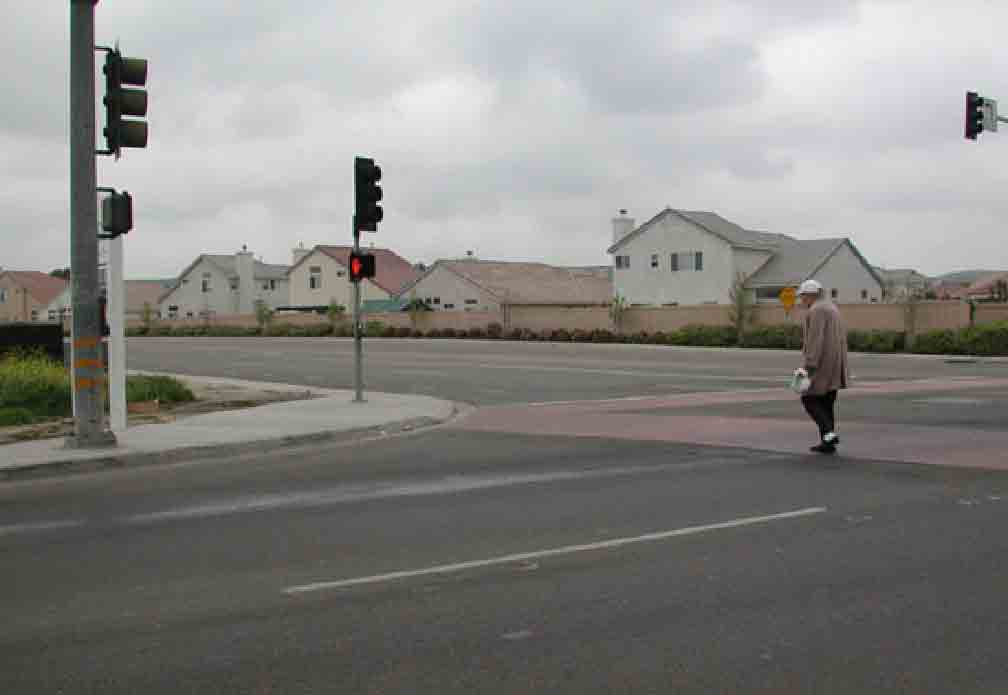
Loneliness is social deprivation in its most obvious form. Loneliness is a topic that is a bit embarrassing for Americans. It connotes social failure and personal inadequacy—not something you want to air in public. It’s considered tragic—a lonely person is someone to pity. It is about emotion—too tender-minded for public policy debate. Yet if the numbers of socially isolated people grow, it becomes a critical public health issue.
Emerging science and public surveys demonstrate that loneliness is no longer just a preoccupation of philosophers, poets, and novelists. Research on this topic is growing in medicine, neuroscience, and sociology. Social deprivation, "as with pain, thirst, hunger, or fear, triggers the fight or flight response that induces a whole host of health risks," says Kimberley Brownlee of the University of Warwick.[3] A recent Time Magazine article was entitled “Why Loneliness May Be the Next Big Public-Health Issue.”[4]
Despite the rise in social media, the headline is not unexpected, according to Susan Pinker. Facebook accounts, iPhones, and text messaging are pale proxies for natural face-to-face life, she says in her book, The Village Effect. She reports on the research of Leslie Seltzer and Seth Pollack at the University of Wisconsin, which shows how mothers calm their children after stressful events. Mammals secrete the hormone oxytocin when giving or receiving physical affection, a hormone implicated in mediating social life in general. Parents talking in a supportive tone with children raise their own and their children's oxytocin levels and drop the child’s stress hormone cortisol. Mothers who comforted their children with Instant Messaging had no affect on their children’s oxytocin or cortisol levels.[5] Participants of online cancer support groups remain depressed (92 percent) from the experience, while most attendees in face-to-face groups found the experience positive.[6]
Clearly sociality is not just in our heads, it’s in our blood. The more physically present we are to each other, the more fully biologic is our social response. A recent study published in the Proceedings of the National Academy of Sciences (2015) reveals how oxytocin works to reward social experience. Oxytocin elicited by social encounters drives anandamide signaling that activates cannabinoid receptors in the brain (the same pleasure receptors activated by marijuana!).[7] When we interact with others we in effect self-medicate—assuming that we have access to other people.
In spite of the biological imperative, the classic places for young people to gather, see each other, and be with other age groups—downtowns and mixed-use neighborhood centers—are challenging to build and revitalize nowadays. These were the lively places where teens ate ice cream, saw movies, went bowling, visited museums, and hung out. Being in public settings in view of other people moderated their behavior. The allure of sex, drugs and vulgar popular culture tends to increase for bored teens who lack access to vital public gathering places.
Just as bad, teens today are retreating into the world of smartphones as a social alternative. It desensitizes them in a deep way to the real, physical basis of human interaction, to the subtle emotional signals of the human face. Shelly Turkle of MIT in her book Reclaiming Conversation cites a study that shows a 40 percent decline in empathy as measured by standard psychological tests among digitally savvy college students over the last 20 years.[8]
The New Urbanism’s under-emphasized factor
Satcher, Okafor, and Dill of the Morehouse School of Medicine applaud the increasing amount of research on the intersection of the built environment and physical health. But they lament that research on the built environment’s impact on mental health and sexual behavior trails far behind. They stress that we need to examine our zoning codes and transportation plans in light of these social and psychological concerns.[9] It is becoming clear that human sociality should be a primary consideration when writing urban development regulations.
Let’s look at the link between city life and social well being more deeply. Based on data from the General Social Survey, the number of Americans who said that they have no one to turn to during difficult times tripled from 1985 to 2004. When asked how many confidants they have, zero was the most common response. With the exception of having wives, men’s lives are especially lacking in confidants. John Cacioppo of the University of Chicago, founder of the field of social neuroscience, cites research showing lonely people as disproportionately inactive and overweight. The obesity epidemic is not just caused by Americans’ sedentary lifestyle.
Loneliness also tends to make people cranky—hard on themselves and others.[10] Given that the single-person household is the fastest growing household type in the United States, so many solitary people can affect politics. "Not only are we at the highest recorded rate of living alone across the entire century, but we're at the highest recorded rates ever on the planet," said researcher Tim Smith at Brigham Young University.[11] Widespread loneliness can be disruptive of the civil discourse necessary for a Democracy to work. With an aging population living in an auto-oriented landscape devoid of public gathering places, the problem could get worse.
The year 2015 averaged a mass shooting a day, most committed by solitary young men. Widespread loneliness is not only sad but also dangerous. These were acts that took other lives, but were also acts of self-destruction. The Center for Disease Control in a 2012 study reported dramatic spikes in the suicide rates of middle-age baby boomers, a generation that in particular resisted social connections that would tie them down.[12] As they age they will find their rootlessness not serving them well.
In October of this year a study done by two economists at Princeton reported a dramatic spike in the mortality of white middle-age less-educated people. New urbanists often talk about the health benefits of walkable urbanism—walking reduces the incidence of diabetes, heart disease and even some cancers. But Nobel laureate Angus Deaton and Anne Case reported that the surge in deaths was caused by poisonings, suicide and cirrhosis of the liver, deaths more associated with states of mind than physical inactivity. Several commentators have attributed these deaths to the over-prescription to whites of opioid pain relievers. This may be partially true for poisonings, but ignores the rising rates of suicide and cirrhosis of the liver.[13]
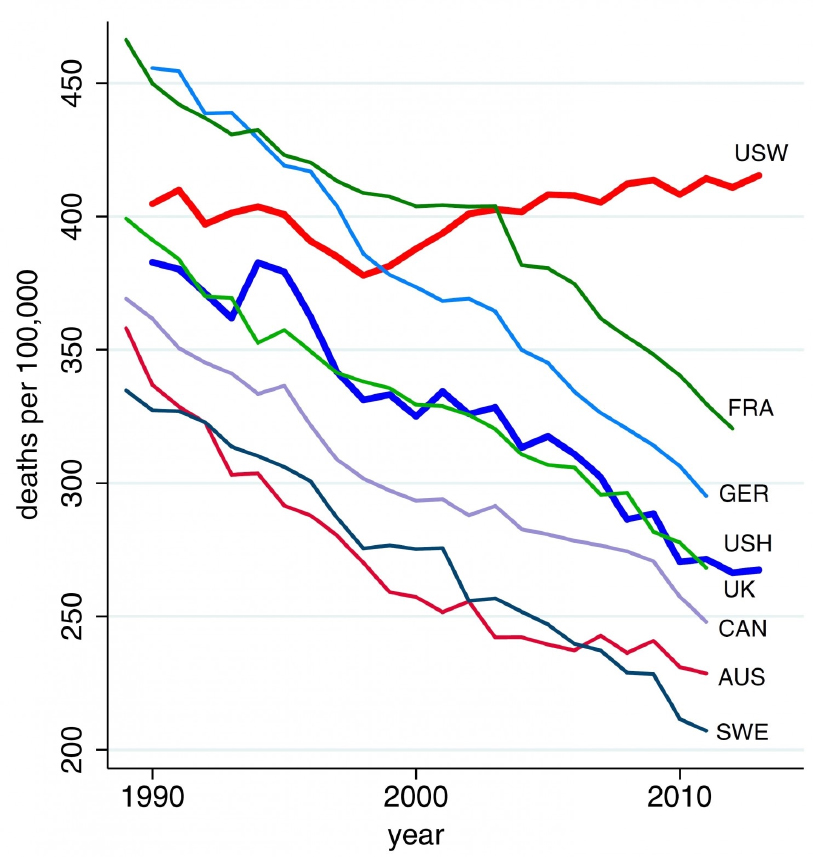
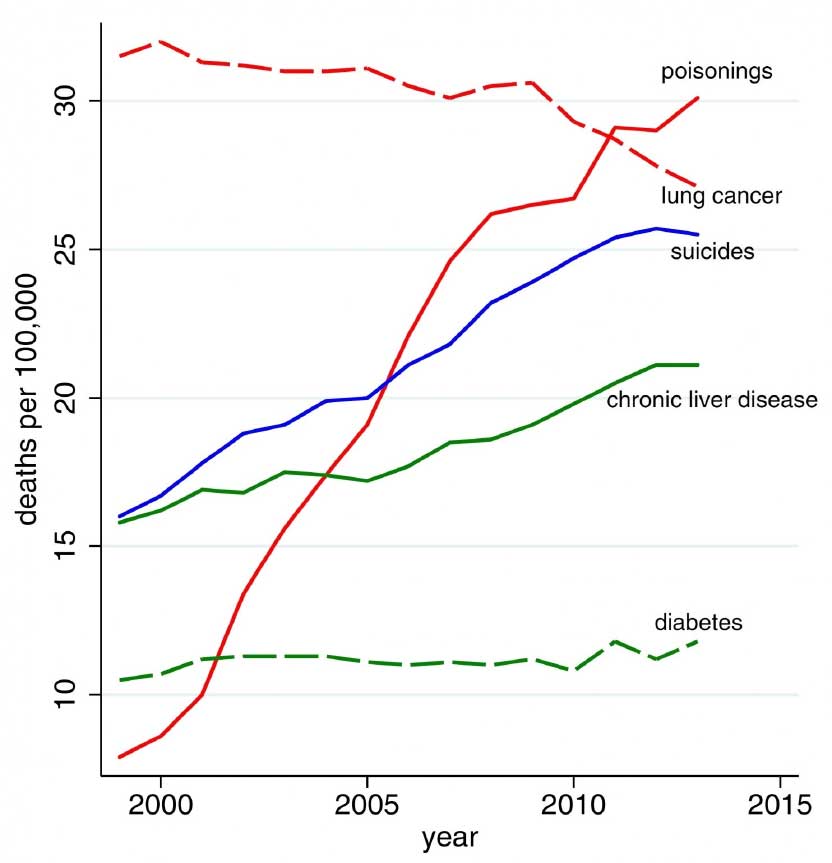
Data over the years from the General Social Survey seem to indicate that Americans are generally happy with their lives, although, outside of large fluctuations during economic recessions, the trend line has declined slowly decade by decade since 1970.[14] Aside from the question of whether having confidants or not affects happiness, living alone affects physical health. According to recently published research at Brigham Young University (2015), living alone increases mortality by 32 percent even for those who self-report that they are not lonely. This is on par with being obese.[15]
Bolles and Nelson (What Color is your Parachute? For Retirement) argue that we tend to be oblivious to our social world and its effect on us. Through many of life’s stages we benefit from Automatic Relationship Generators that give us social connections with little conscious initiative on our part.[16] Parenting, schools, colleges, work, and public spaces naturally immerse us in social fields. For most people human sociality does not register as a moment-by-moment force in their lives—until they divorce, get fired, lose a spouse, find themselves stranded far from home, find themselves ostracized, or get old and infirm. Then the presence or absence of people in their lives becomes painfully apparent. Bolles and Nelson say that neighborhood design that encourages social connection is critical for older people. This is because retirement is often a time in which Automatic Relationship Generators are not a certain part of their lives.[17]
Urbanism is a natural expression of what humans are
Animals that are social congregate. Humans are different from most other social animals in an important respect, though. We congregate in defined physical spaces. Bison are content to drift as a herd across the prairie. Even our primate cousins like to keep moving. Humans stake out a physical location to live. The Harvard biologist E. O. Wilson calls this unique kind of settled sociality eusociality. Bees do it. Ants do it. Among mammals only humans and a couple species of rodents in Africa do it.
Humans early on settled at campsites.[18] Since they had to tool up to cook their food and couldn't just walk away from their waste like bison, settling unleashed a neural load on the human brain: functional assignments of space, waste disposal, divisions of labor, and communication. Our brains got bigger to deal with it all.
Humans don't generally congregate in the middle of empty fields. We are drawn to social spaces defined by walls, trees, or facades of buildings—spaces limited in size. We like those places because—whether we choose to or not—getting to know people there looks doable. Neighborhood main streets are usually just one to three blocks long. Historically, these social centers usually constituted 5 to 10 percent of the area of a neighborhood.
For as long as humans have settled, the marketplace was where social life was most robust. Commerce is more than just the exchange of goods and services for money—commercial centers can also be places of cultural, social, intellectual, and emotional exchange. For communities with strong physical identities, the commercial streets are still the beloved public face. With the automation, digitization, and auto-orientation of commerce in recent decades, much of the social content of our commercial centers has been stripped out. People may be attracted to convenience and inexpensive goods, but the social satisfactions are weak. Nevertheless, creative urban design can revive a forgotten main street, or convert a dead shopping center into a walkable town center. Every community, whether new or historic, needs to proactively take charge of its own social destiny by developing plans for new walkable social spaces and safeguarding its historic centers.
Coding for community
Many cities are reforming their zoning in response to various performance metrics: CO2 emissions, energy consumption, water use, and vehicle miles traveled are examples. Social connectedness is harder to reduce to a metric. It may never be measurable as a dynamic parameter that provides feedback on development form, unless we wire everyone in a developing community with oxytocin and cortisol meters!
The good news is that when most people are made aware of their own social feelings they recognize its importance. They see evidence of longing and belonging everywhere and recognize how places make them feel. This may be enough to inspire communities to draft urban form regulations to shape the social realm.
Until recently it was a rare community that drafted form-based codes, which take more imagination and thought than conventional land-use zoning that simply colors an area on a map as “commercial.” It requires a willingness to intently study a place—walk, measure, and discuss it with community members, learn about the physical interventions that make other places socially successful, and then draft the plans and codes to bring about desired change.
Coders, planners, and designers need to feel the urgency of social design in their bones as they shape places. Making interventions to improve walkability needs to be informed by these feelings. Many a street has been buffed up with decorative street lamps and banners, trees, bike racks, street furniture, landscaping, and the like, yet remains socially dead as the image below shows.
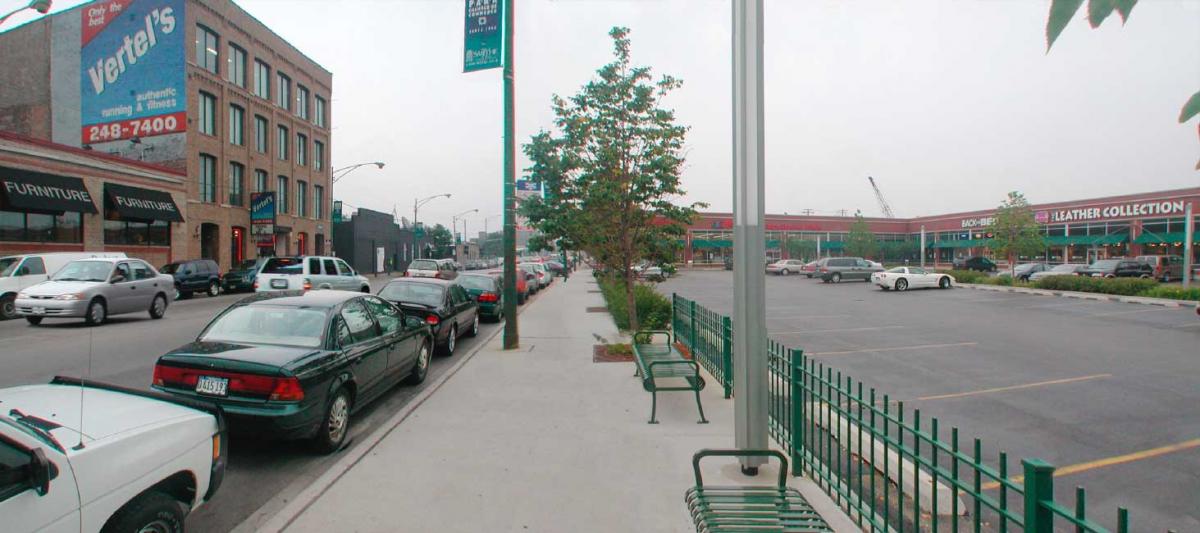
Conventional zoning focuses on land-use of private property, rarely concerning itself with the street or the relationship of buildings to the street. In effect it has given up on the shape of the public realm, treating streets as primarily vehicle corridors. Form-based coding sees streets as public social spaces that need to be shaped; it regulates buildings and rights-of-way together as one place. Therefore main streets and downtowns can be vitalized with form-based codes that are attentive to the social implications of how buildings and streets work together. Concerns about how wide sidewalks are, how close buildings are to sidewalks, whether the frequency and transparency of windows imply that buildings are inhabited, how inviting ground floor frontages are, whether street lighting serves pedestrians, whether business signage can be read from the sidewalk, and how well people can see and read the faces of others, are all powerful features of good form-based coding.
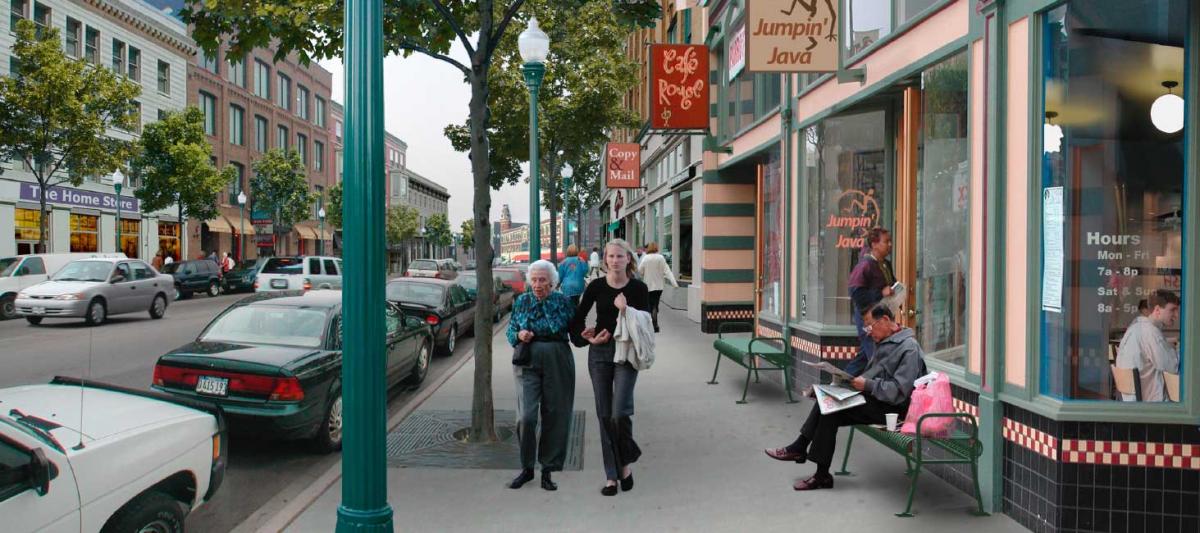
Communities considering drafting form-based codes, but worried about the cost, should consider human sociality as a measure that helps set priorities and scope. Communities could start small by coding neighborhood centers. This makes sense because local governments are usually more agreeable to making community improvements when a relatively modest area, such as a three-block main street, is involved. As a center socially flowers, neighborhood identity and pride will increase. More people will want to reside nearby. Vehicle miles traveled and residents’ carbon footprints will decrease as people find social satisfactions in their own neighborhoods. Further planning and coding can build out from these revitalized cores, enhancing walkability and social vitality of more and more of a town or city.
Of course, a socially supportive urban form will not bring about the complete eradication of loneliness. Loneliness is a signal from our body that we need other people—as valuable a signal as hunger, fear, or exhaustion. People will always have feelings periodically of loneliness, but physically dispersing people and degrading public spaces, as the sprawl of recent decades does, make the condition harder to alleviate. As more and more research is showing, this is a serious and growing public issue.
The poet John Donne said four hundred years ago, “No man is an island.” Shouldn’t this be acknowledged in our development regulations?
Note: This article was created with the assistance of the Form-Based Codes Institute.
[1] Aristotle, Nicomachean Ethics, (New York: Barnes & Noble, 2004), p. 17
[2] Aristotle, p. 198
[3] Kimberley Brownlee, “On Social Deprivation,” Philosophy Bites podcast, August 19, 2015
[4] Justin Worland, “Why Loneliness May Be the Next Big Public-Health Issue,” Time Magazine, March 18, 2015, time.com/3747784/loneliness-mortality
[5] Susan Pinker,The Village Effect, (New York: Spiegel & Grau, 2014), p. 167-168
[6] Susan Pinker, p. 41
[7] Wei, Lee, Cox, Karsten, Peñagarikano, Geschwind, Gall, and Piomelli, “Endocannabinoid Signaling Mediates Oxytocin-Driven Social Reward,” Proceedings of the National Academy of Sciences, 2015
[8] Shelly Turkle, Reclaiming Conversation, (New York: Penguin Press, 2015), p. 171
[9] Satcher, Okafor, and Dill, “Impact of the Built Environment on Mental and Sexual Health: Policy Implications and Recommendations,” International Scholarly Research Network, April 2012
[10] John Caccioppo, Loneliness: Human Nature and the Need for Social Connection, (New York: W.W. Norton & Company, 2008), p. 28, 47-52
[11] Brigham Young University, "Loneliness and social isolation are just as much a threat to longevity as obesity." ScienceDaily, 11 March 2015. www.sciencedaily.com/releases/2015/03/150311160521.htm
[12] Tara Bahrampour, “Baby boomers are killing themselves at an alarming rate, raising question: Why?,” The Washington Post, June 3, 2013, www.washingtonpost.com/local/baby-boomers-are-killing-themselves-at-an-a...
[13] Lenny Bernstein and Joel Achenbach, “A group of middle-aged whites in the U.S. is dying at a startling rate,” The Washington Post, November 2, 2015, www.washingtonpost.com/national/health-science/a-group-of-middle-aged-am...
[14] Smith, Son, and Schapiro, General Social Survey, Final Report: Trends in Psychological Well-Being, 1972-2014, NORC at the University of Chicago, April 2015, p. 53
[15] Holt-Lunstad, Smith, Baker, Harris, and Stephenson, “Loneliness and Social Isolation as Risk Factors for Mortality,” Perspectives on Psychological Science, March 2015
[16] Richard N. Bolles and John E. Nelson, What Color is your Parachute? For Retirement, (Berkeley: Ten Speed Press, 2007), p. 155-157
[17] Bolles and Nelson, p. 180-201
[18] Edward O. Wilson, The Social Conquest of Earth, (New York: Liveright Publishing Corporation, 2012), p. 35-36




